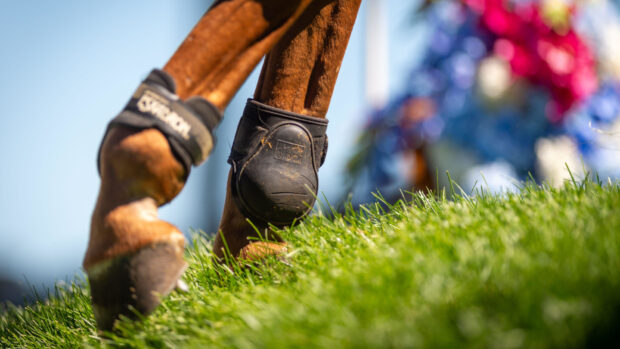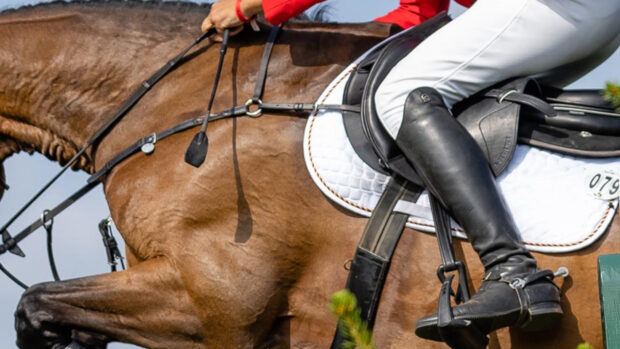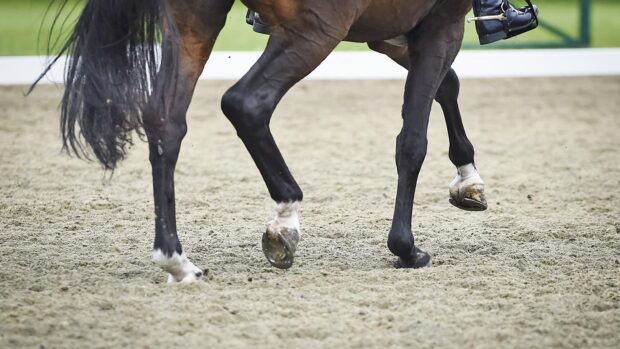New rules around blood-related showjumping eliminations and dangerous cross-country riding are among those to be approved for 2023.
Voting took place at the annual FEI General Assembly in Cape Town (10-13 November), following a rules review process throughout the year where national federations and other stakeholder had their say on proposals. The final drafts went to the vote and all were approved for eventing, dressage, para dressage, and showjumping.
A new rule comes into force for eliminations in showjumping, and follows a proposal from the Swedish national federation after a combination completed their round in Tokyo despite the horse bleeding from the nose. Under the amended rule the president of the ground jury, or in their absence a designated ground jury member, may ring the bell to eliminate a combination while a round is ongoing if it is decided it would be “contrary to the principles of horse welfare” to allow the combination to continue – and this elimination is final and not subject to appeal.
The original proposal from the Swedish federation asked for the rule to state “Horses bleeding from nostril (airways) will result in elimination”, but during the review process the FEI jumping committee argued that the wording needed to be broader, and the International Jumping Riders Club agreed.
“The IJRC agrees with the jumping committee that believes that a broader concept going beyond just the relatively rare case of blood in the nostrils is needed in order to give the ground jury the clear authority to take action where there are serious horse welfare concerns,” the IJRC said.
In eventing, course-designers will have the right to monitor possible cases of dangerous riding during the cross-country phase and report this to the ground jury, who will take the decision on elimination. This topic was discussed at the FEI sports forum in April (news, 12 May), during which FEI eventing committee chairman David O’Connor highlighted that on the day of the event, often the course-designer is “the most educated person about, on how horses jump”
“We’ve had no backlash from course-designers on this, they’re very happy to do it. To have their expertise I think is hugely important,” he said.
Eventing course-designers cannot officiate at the same venue for more than six consecutive years at CCI4*-S and CCI4*-L, including championships, and for more than eight years at CCI5*. But they may officiate again after a three-year break.
The timeframe for eventing MERs used for athlete categorisation will be reduced from eight years to four years following a review from the FEI risk management steering group with EquiRatings. Athlete categories will also be updated according to the performances at the end of each month, instead of twice a year.
Horses who have not competed at FEI competitions within 13 months will have to complete a lower-level event to compete at CCI4* and above. To compete in a CCI4*-S they must complete a CCI3*; for a CCI4*-L they must complete a CCI4*-S, and to compete in a CCI5* they must complete a CCI4*-S or CCI4*-L.
In dressage, under the new rules – of which 91.21% of voters were in favour – the short grand prix test will only be allowed in a CDI5* or CDIO5* if the grand prix is scheduled during prime-time sessions; end of the afternoon or evening, and when there are “clear restrictions” on arena availability. In May, the FEI board had approved the option for organisers to offer either the standard or the short grand prix at World Cup qualifiers.
Other changes include competition categories: small, medium and big tours have been replaced with individual CDI star ratings – plus new qualification criteria for CDI4* will come into force, requiring combinations to qualify at CDI3* by scoring 63% in a grand prix or grand prix special.
From 2023, if a horse is stopped in a freestyle event, owing to extreme weather for example, the rider will now be permitted to start either from the beginning of the test or from where they stopped.
You might also be interested in:
Three quarters of riders think horse welfare needs improving

A time limit on cross-country course-designers? Vote imminent on new eventing rules

Subscribe to Horse & Hound magazine today – and enjoy unlimited website access all year round
Horse & Hound magazine, out every Thursday, is packed with all the latest news and reports, as well as interviews, specials, nostalgia, vet and training advice. Find how you can enjoy the magazine delivered to your door every week, plus options to upgrade your subscription to access our online service that brings you breaking news and reports as well as other benefits.




